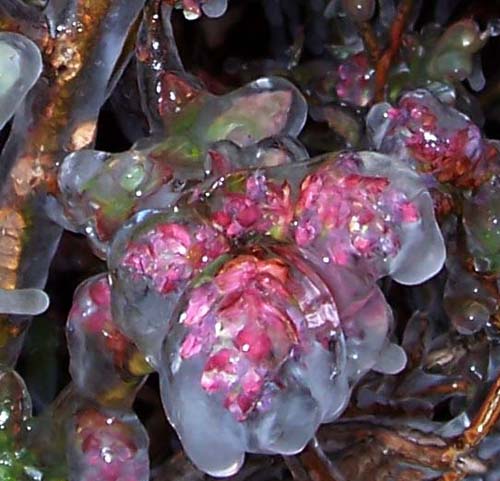Protect blueberries from spring freezes by using sprinklers
Many blueberry growers use sprinkler systems to protect blueberry flowers from spring freezes. A fact sheet for growers is posted at the Michigan Blueberry Facts website.
Sprinkler irrigation systems can be used to protect blueberry flowers from spring freezes. The freeze protection from sprinkler systems is limited by the irrigation rate. Most sprinkler systems in Michigan blueberries are designed to provide from 0.10 to 0.15 inches of water per hour. This volume protects plants to about 22 degrees F with no wind, or 24 to 25 degrees F with a light wind.
Blueberry flower buds can withstand very cold temperatures in the winter. As the blueberry buds swell and burst, they can be damaged by temperatures above 20 degrees F. As the flowers develop, they can be damaged by warmer and warmer temperatures, but generally temperatures above 25 cause little damage. Near bloom temperature below 28 degrees F can kill the flowers. At this stage, growers can protect their fields using sprinklers. To help growers decide whether or not to use their irrigation systems for freeze protection, a new fact sheet, Using Sprinklers to Protect Blueberries from Spring Freezes, has been posted at the Michigan Blueberry Facts website.

Blueberry flowers encased in a protective ice coating. Photo credit: Brookside Farms
Sprinklers are very effective under certain circumstances, but can increase injury if used at the wrong time. Sprinklers used for irrigation do not protect below 23 to 24 degrees F. When you use sprinklers to prevent freezing injury, you are using the energy that water releases when it freezes, changing from a liquid to a solid, to keep the temperature in the ice at the freezing point 32 degrees F. As long as you keep the ice wet, the ice temperature will stay at 32 degrees F.
Related MSU Extension News article: Using sprinklers to protect plants from spring freezes.
Additional Information
- MSU Extension’s 2012 Fruit Freeze Resources



 Print
Print Email
Email
